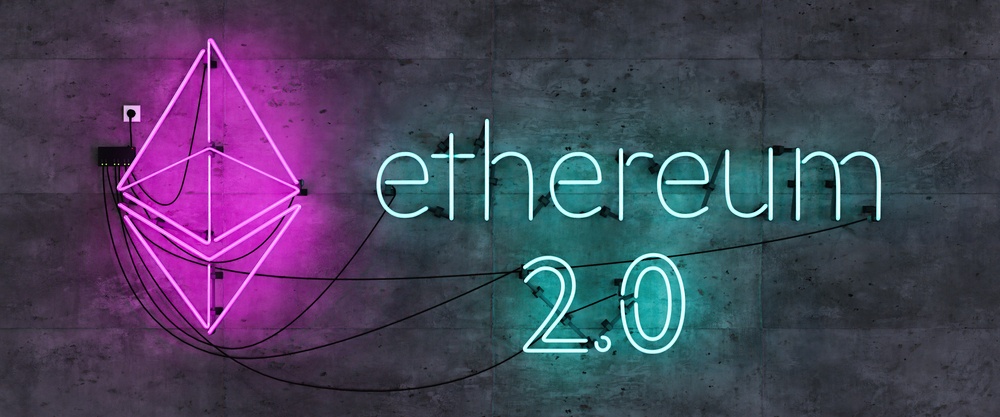Taproots And Beacons: The Evolution Of Bitcoin And Ethereum
It is no more news that the future of the entire crypto industry hinges on the success of digital asset technology. While we have seen a wide variety of practical interpretations of cryptocurrency in the last 12 years, the fact remains that it is still very much nascent and far from being an established technology. With this general context in mind, it is safe to say that there is enough room for growth. But there is no denying that the industry and the technology alike are sometimes plagued by uncertainties.
In this guide, I will explore these uncertainties and try to objectively analyze them. Here, I will focus on the top 2 cryptocurrencies and how their ongoing evolution could alter the momentum and status of the crypto movement as a whole. The cryptocurrencies in question are Bitcoin and Ethereum.
Before diving into the current state of these two cryptocurrencies, it is worth taking a look back at how they have fared so far.
The Emergence Of Bitcoin

In 2008, Satoshi Nakamoto came up with a radical plot to strip governments and financial institutions of their authoritarian control over money. At that time, the world was reeling from the effects of a global financial crisis sparked by shaky monetary policies introduced by governments and large financial institutions. Nakamoto noted that the excessive spending by governments to keep banks in businesses was detrimental to the average individual. So, he set out to develop a peer-to-peer network that gives users more control over their finances.
The whole idea was to create a specialized financial instrument that did not require the infrastructures of centralized authorities before transactions were executed and confirmed. Although not many knew at the time, the introduction of Bitcoin also highlighted the rise of blockchain technology. Thus, Nakamoto had single-handedly refined and introduced 2 compatible and powerful concepts potent enough to alter existing financial orders.
Following the official introduction of the Bitcoin initiative in 2008, the network eventually launched in 2009. Note that Bitcoin was not an instant success. In its early days of operations, it attracted libertarians in their number for obvious reasons. For the first time, this fundamentalist group could use an economic tool that promised autonomy and an escape from the financial sovereignty of governments. In contrast, most onlookers viewed Bitcoin as a joke and an unsustainable system.
After libertarians, the next group of people that found Bitcoin to be useful were criminals. In 2011, Bitcoin became a popular payment method on the dark web. A prominent darknet marketplace, the Silk Road, had adopted bitcoin as its primary payment system. In essence, bitcoin was heavily linked to drug trafficking, child pornography, and all sort of illicit activities. At this point, Bitcoin was not only perceived as an anti-censorship-resistant asset but also an anti-surveillance financial instrument. Therefore, it was wrongly believed to provide anonymity.
However, as we have come to discover down the line, Bitcoin is not as privacy-conscious as it was originally thought to be. Although users are issued pseudonyms in the form of public addresses, anyone with the right tools can unravel the real-world identities behind these addresses. The Bitcoin anonymity myth was eventually put to rest when law enforcement agencies caught up with the creator and operators of the SIlk road in 2013. Nonetheless, the harm had already been done. As time went by, it became glaring that the rest of the world had already formed a negative narrative about Bitcoin. Traditional investors, the government, banks, and mainstream media were convinced that Bitcoin was nothing but bad news.
Due to the bad rep gained as a result of Bitcoin’s affiliations with the dark web, the Bitcoin community would spend the next 8 years trying to convince the world that the digital asset is indeed a viable financial innovation. While a lot more people are now open to the idea of owning and using Bitcoin, there are still those who have held onto the disjointed belief that Bitcoin tends to harbor criminal elements.
What these people fail to understand is that the technology is as transparent as they come. All transactions and data processed via the Bitcoin network are stored on the blockchain, which ordinarily functions as a public ledger. Therefore, the transactions are there for all to see.
It is worth mentioning that the earlier setbacks caused by the misrepresentation of Bitcoin did not have a lasting impact on the growth of the crypto network. The upward trajectory of the price of the digital asset continued to attract new users such that governments and legacy financial institutions began to notice and take the technology seriously. More importantly, the success of Bitcoin ushered in a new generation of cryptocurrencies that either looked to build on the functionalities of the Bitcoin protocol or create new blockchain iterations that promised even more improved features. One of the most successful crypto variants that launched after the introduction of Bitcoin is Ethereum.
The Rise Of Smart Contract-enabled Blockchain

Ethereum launched in 2015 as an application-based blockchain ecosystem that strives to preserve the original ethos of Bitcoin. This meant that decentralization and autonomy remained the central theme of the ecosystem. In addition, the network focused more on enabling a conducive environment where developers can launch and operate decentralized apps. All this was made possible with the introduction of smart contracts.
For the uninitiated, a smart contract is a program that executes predefined agreements between two or more parties autonomously. With this, developers can set conditions required for processes to execute without the inputs of third parties. In essence, it became possible to transcend the payment-only limitations associated with most blockchain networks at the time. Thanks to the advent of Ethereum, the range of crypto applications has expanded exponentially such that even the most conservative of industries are looking to adopt crypto in one capacity or the other.
It is worth mentioning that Ethereum has been very influential in the grand scheme of things since it launched. We can even argue that Ethereum has had more impact on recent crypto market trends than Bitcoin. Remember that it was the introduction of smart contracts and the subsequent explosion of blockchain applications that led to the Initial Coin offering (ICO) boom of 2017. It can also be argued that this boom was perhaps the major contributing factor to the bullish market trend of 2017. At the height of this ICO craze, everyone wanted a piece of crypto profits promised by the potential implementation of crypto technology in an array of industries. And so, there was a crazy inflow of capital that momentarily drove the price of digital assets to an all-time high.
Another major impact of Ethereum was felt in 2020 when decentralized finance finally emerged as a reliable alternative to traditional finance. At the early stage of this boom, it seemed that some of the projects that promised decentralized and crypto-based financial applications during the ICO era had begun to deliver. This feat was later emphasized by the introduction of new variants of DeFi products that took things to a whole new level. Not only was the DeFi market outperforming the traditional finance markets, but also it was way ahead of Bitcoin and other altcoins in terms of price gains.
Fast forward to 2021, Ethereum continues to highlight the importance of an application-based crypto ecosystem and how it can create value propositions that are potent enough to attract mainstream consumers. Earlier this year, non-fungible tokens became the latest crypto concept to become a buzzword. This functionality established by the Ethereum ecosystem showed us another way crypto can impact our daily lives. By representing digital and real assets on Ethereum, it became clear that the advantages of blockchain technology can finally transcend the digital world and materialize in the physical world.
However, despite the tremendous achievements of Ethereum, it is safe to say that we are yet to scratch the surface.
The Present-Day Bitcoin

Understandably, Bitcoin has had to deviate a little from the initial design of Satoshi on its way to become the colossal force it is today. One of the notable alterations is its mining economy. When Bitcoin first launched, it was possible to plug in a household computer to network and mine Bitcoin profitably. Today, the opposite is the case.
Now more than ever, miners have to invest a considerable amount of capital in specialized mining hardware to ensure profitability. This is in addition to the money spent on electricity to power mining equipment round the clock. In essence, Bitcoin mining has increasingly become an industrialized venture. Only companies and individuals that can afford to compete are the ones opting for solo mining operations. On the other hand, average miners often have to join mining pools to stand a chance of generating consistent profits. Why is this so?
The Bitcoin consensus protocol is designed such that mining difficulty increases proportionally with the total hashing outputs of miners. In essence, the higher the total mining power connected to the Bitcoin network, the harder it is to mine Bitcoin. Note that this algorithm has been in place since the inception of Bitcoin. Satoshi had implemented a self-regulating mining difficulty protocol to ensure that it took an average of 10 minutes to add a new block of transactions to the bitcoin blockchain.
However, what he did not envisage was that miners would begin to utilize highly sophisticated machines with astronomical mining power to boost their advantage. The widespread use of very powerful mining equipment automatically increased the mining difficulty exponentially. In turn, there is the tendency of a high concentration of hashrate. What this means is that miners tend to flock to regions with affordable electricity.
The concentration of mining hash rate in a particular region is a threat to the decentralization of Bitcoin. Also, it gives governments an avenue to undermine the Bitcoin network. For instance, the China crypto mining crackdown was devastating to the Bitcoin ecosystem because the country generated the largest share of mining hashrate before the ban.
Moreover, environmentalists have condemned the energy-inefficient process involved in Bitcoin mining. The electricity-intensive nature of mining has put Bitcoin in the line of fire in the last couple of years. Earlier this year, Elon Musk and Tesla blamed their decision to reverse plans to start accepting bitcoin as payment on the environmental-unfriendliness of the digital asset. Following this revelation, there was a marketwide panic that forced the price of bitcoin to plunge by 50%.

Another notable design switch that we have come to embrace centers around the activities of crypto exchanges. Unlike the early years of Bitcoin’s operation, most participants used personal wallets to store or transfer Bitcoin. Today, the majority of crypto operations are facilitated through centralized exchanges. In essence, Bitcoin that was designed to enable peer-to-peer transactions is increasingly being influenced by third parties. In today’s reality, crypto exchanges somewhat play the role of banks as users do not have real control over their digital assets.
Notwithstanding, we cannot deny that the activities of these exchanges have had a massive positive impact on crypto adoption rates. Bitcoin and most cryptocurrencies are not user-friendly. New users often have to scale irksome processes to store and transfer digital assets independently. In contrast, exchanges try as much as possible to eliminate the barriers to entering the crypto market by providing custodial services that take the security burdens away from users. Although this approach has its fair share of security flaws, it does provide the much-needed simplicity that new users crave.
Since third parties have become major players in the space, it is relatively easier for governments to implement crypto regulations. Recall that Satoshi originally set out to defy the bureaucratic system of fiat currencies. Well, in the last couple of years, it seems that the days of defiance are over. The influx of centralized entities in the crypto world unlocks more opportunities for governments to censor and surveil bitcoin transactions.
More importantly, the bitcoin use case has shifted from being a payment solution to a store of value. Note that the volatility of the price of Bitcoin diminishes its claim to become legal tender. Not many holders and merchants have explored the payment rail functionality of Bitcoin due to the speculative nature of the coin. More recently, the world has begun to embrace Bitcoin as an asset with inflation hedging capacity. As such, more people are adopting Bitcoin as digital gold.
Scalability also features as another reason Bitcoin’s payment application is playing second fiddle to its inflation-hedging function. The lack of a robust transactional infrastructure that can compete with traditional payment rails like Paypal has been a major talking point. For Bitcoin to become a viable payment system, the bitcoin community must first find a lasting solution to expand the throughput of the network.
The Present-Day Ethereum

Like Bitcoin, Ethereum is battling scalability issues and high transaction fees. These issues have limited the efficacy of the applications launched on the blockchain. For instance, most investors are unable to participate in the DeFi market because of the high cost of transactions. In some cases, you may have to pay way higher than the value of your transaction as network fees. The same problem surfaced all through the NFT boom.
Also, there have been concerns raised over Ethereum’s energy usage. Like Bitcoin, Ethereum requires users to dedicate computational resources to a mining process for the chance of earning rewards. The inefficiencies of this system have come under scrutiny following the explosion of NFT solutions in the art world.
Without any doubt, Ethereum will not reach its true potential if it does not find a permanent solution to this recurring problem. Notably, other smart contract blockchains have begun to capitalize on Ethereum’s complacency. These alternatives are often more scalable and they require only a small fraction of the value of transactions as fees.
For example, Binance Smart Chains has become a clear favorite for developers and users looking to escape Ethereum’s flaws. Interestingly, the blockchain is compatible with the Ethereum Virtual Machine (EVM) used by Ethereum-based developers to build their applications. In essence, Ethereum-based applications can migrate to Binance Smart Chain seamlessly.
Is Ethereum Evolving?

Knowing fully well that Ethereum risks losing its market dominance, the development team has initiated and implemented a series of upgrades to improve the blockchain’s scalability and implement Ethereum 2.0. Remarkably, these upgrades will culminate in a dynamic shift from the blockchain’s current mining-based protocol to a staking-compatible infrastructure. In other words, the Ethereum ecosystem will shed its Proof-of-Work (PoW) consensus mechanism and adopt a Proof-of-Stake (PoS) consensus model.
What this means is that mining will become obsolete in the Ethereum ecosystem. In its place, users would only need to lock Ether on the blockchain to qualify as validators. With this switch, Ethereum can finally become energy-efficient.
Apart from the environmentally friendly nature of PoS, it is also one of the consensus mechanisms compatible with sharding, which is the proposed scalability solution for Ethereum 2.0. Simply put, sharding is an integrative system that lets multiple blockchains run parallelly while sharing load and resources. With this, the current load of the Ethereum blockchain can be shared between 64 chains running parallel to the upgraded Ethereum 2.0 blockchain called the Beacon Chain.
Back in March, Jack O’Holleran, CEO of Skale Labs, revealed that the ongoing upgrades will eventually result in a more evolved and application-friendly Ethereum blockchain. He stated:
“The Ethereum mainnet will evolve into a base layer of security and settlement. Scalability layers will sit on top of Ethereum, providing functionality for smart contract execution and low gas fees. We will also see the rise of application-specific blockchains, which provide more price efficiencies with greater predictability.“
In December 2020, the Beacon Chain launched successfully, and staking officially kicked off. As of the 26th of July 2021, over $15 billion worth of Ether has been staked. This represents a little over 5% of the circulating supply of the digital asset. Compared to other staking-based coins, the fraction of staked coins to the maximum supply of Ether may seem low. However, as argued by Kosala Hemachandra, founder and CEO of MyEtherWallet, this is a clear indication that Ether offers much more than staking rewards:
“Unlike most other PoS coins, the whole purpose of ETH is not just staking and earning interest. This is a good sign for ETH being used as a utility. For example, if 80% of ETH is staked, then there is only 20% of ETH left to do anything in Ethereum, and I don’t think this is an ideal scenario.”
As explained by Hemachandra, having 5% of the circulating supply of Ether locked in the staking contract proves that Ethereum 2.0 has been a success so far.
However, the upgrade is expected to run until the latter half of 2022 when the original Ethereum blockchain is scheduled to merge with the staking-based Ethereum 2.0 chain. Until then, all staked assets and the corresponding rewards are temporarily locked. Thus, stakers would have to wait for the merge to occur before they can withdraw their Ether or their staking returns. While explaining how this delay helps the community in general, O’Holleran stated that the schedule for Ethereum 2.0 leaves ample time for users and developers to transition from Eth1 to Eth2:
“It will certainly take time for the majority of ETH1 to transition into ETH2 — potentially years not months. The good news about the slowness of this transition is that DApps and DeFi platforms will be able to move over at their leisure based on real-world evidence of viability, security and adoption. This is a net positive for the Ethereum ecosystem.”
The London Fork

The next planned Ethereum 2.0 upgrade called the London fork is expected to initiate on August 4th, 2022. It is worth mentioning that this upgrade comes with a deflationary protocol that looks to limit the circulating supply of Ether. In theory, this protocol will alter the mining reward mechanism such that Ethereum can set base fees for transactions as a replacement for the current bid-based system.
When this upgrade goes live, Ethereum will set base fees for each block of transactions and subsequently burn the commissions. As such, miners will no longer receive transaction fees in addition to the fixed block rewards. Instead, mining rewards will be limited to the standard 2 ETH block rewards and money earned from a tipping mechanism. The tipping system allows users to add extra fees to the standard base fee so that miners can prioritize their transactions.
Ultimately, this upgrade will reduce the circulating supply of Ether, that is if the rate at which Ether is burned exceeds the rate at which new ones are supplied to the market. If this is the case, then the value of Ether could become more deflationary. James Beck, director of communications and content at ConsenSys, highlighted the potential impact of burning fees in an interview with Cointelegraph:
“Burning the base fee should put a deflationary pressure on the issuance of ETH, though modeling exactly how deflationary is difficult since you have to project variables like expected transactions, and, even harder to predict, expected network congestion. In theory, the more transactions that occur, the more deflationary pressure that the burning of the base fee will have on the overall Ethereum supply.”
Vitalik Buterin also noted that the success of the deflationary mechanism heavily depends on the appeal of the Ethereum network. According to Buterin, the burning mechanism will burn more Ether if the transaction processed on the network remains high:
“If demand to use Ethereum is high enough, then there would actually be more ETH being destroyed than is being created. And so the joke that I would sometimes make is, if Bitcoin knows if fixed supply is sound money, then if you have a decreasing supply, does that make us some ultrasound money?”
Eventually, when Ethereum 2.0 is up and running, the ecosystem would have evolved into a more improved network that is suitable for more intense and complex crypto applications. At this point, Ethereum would run a new blockchain infrastructure powered by a new coin and inflation model. O’Holleran aptly summarizes this eventuality:
“The connection is that it will all be composable and compatible with the Ethereum ecosystem and that tokens from the first network can be burned and replaced with tokens from the second network. What this means is that DApps and users will not be directly impacted until they manually switch networks. The indirect and immediate impact will be in relation to how the supply and perceived value impact the price of tokens on both networks.”
However, as promising as this sounds, not everyone is confident about the capability of Ethereum to resolve its current flaws. In an article titled “Ethereum’s 2.0 upgrades aren’t the game-changer that could bring more users”, Adrian Krion explained that Ethereum 2.0 would do little to alleviate the scalability issues often associated with the legacy Ethereum blockchain. Krion wrote:
“While the infrastructural upgrades may prove beneficial in some capacities, such as improving the flow of transactions, they still miss the mark. First, Ethereum 2.0 has been in the works for years, leaving many users wondering when the actual full upgrades will happen. Proof-of-stake is intended to reduce mining cost and energy consumption, however, network throughput will only increase if block times are reduced and/or block sizes are increased. Furthermore, sharding only helps applications that can run independently from one another and only need to be synced every once in a while. But DeFi’s inherent decentralized and open-sourced nature means that the sharding-style processing would need to run transactions through a relay chain and thus slow down the entire process.”
Also, Krion noted that user experience has always been a recurring problem for new Ethereum users. Up until now, Eth 2.0 has not highlighted this issue, which means that it is not considered a major talking point:
“More importantly, on the user experience front, Ethereum is still lagging behind to a large extent that remains unsolved by the rollout of the Eth2 upgrade. While Ethereum claims it will release upgrades that solve the transaction processing speeds and high gas fee problem to a degree, the foundation shows a blatant disregard for issues that, if resolved, would open doors for a greater number of users who are currently daunted by Ethereum’s unfriendly interface.”
After exploring the deficiencies of Eth 2.0, Krion concluded that the changes are nothing more than superficial upgrades:
“Until Ethereum can solve some of the deeper issues at heart, it’s doubtful that Eth2 will make a significant difference for anyone outside of the community of Ethereum enthusiasts. For now, Ethereum 2.0 is not a much-needed game-changer, but rather a cosmetic upgrade.”
Bitcoin’s Taproot Upgrade

Unlike the extensive changes currently being implemented in the Ethereum ecosystem, the Bitcoin network is taking a more conservative route to development. The development team is preparing for a soft fork upgrade, called Taproot, slated for November 2021. This will be the first Bitcoin upgrade in 4 years.
Taproot implements sets of changes that border on privacy and smart contract functionality. Once Taproot goes live, the bitcoin network will allow the masking of certain spending conditions. Proponents believe that this will make some transaction operations cheaper on the Bitcoin network. While speaking on the possibilities that Taproot provides, Pieter Wuille, Bitcoin developer at Chaincode, explained:
“It [Taproot] extends Bitcoin’s script capabilities in ways that make certain things cheaper (especially more complex applications like multisig and layer-two things), and somewhat more private by often hiding what the exact spending rules were.”
Apart from this, the other improvement that Taproot promises revolves around added smart contract functionality. The upgrade will reduce the block space taken up by smart contract-based transactions. If this goes as planned, it will make it cheaper and more private to use smart contracts on the Bitcoin network. Riccardo Casatta, another Bitcoin developer, remarked that the smart contract improvements that Taproot offers would solve privacy issues in the long run:
“The taproot upgrade includes a bunch of improvements, the most significant enhances privacy in the long term. A misconception we have today is that Bitcoin usage is mostly private, while in reality, transaction activities leave a lot of traces on the blockchain. For example, Bitcoin is sent to different addresses — e.g., starting with ‘1,’ ‘3’ or ‘bc1,’ according to the version and the smart contract behind them. This is a problem because it reveals information about the user’s spendings.”
Casatta added that with Taproot, multi-signature indistinguishable from single-signature transactions:
“With taproot, different spending conditions may look identical in the most common case, and this is great because it reveals less information about users, and it also improves efficiency.”
Notably, Casatta believes that the implementation of this upgrade will encourage more users to utilize smart contract applications on Bitcoin:
“In the middle/long term, I see an increase in Bitcoin smart contract usage, enabling use cases like inheritance and delegation in company spendings. And the best part is that, by looking at the blockchain, we will not know about that.”
When asked if he thinks the implementation of Taproot would impact the price of BTC, Lior Yaffe, CEO of Jelurida, stated:
“Given that the recent surge in Bitcoin price can be attributed more to its potential use as a store of value and to adoption by institutional investors, I don’t expect Taproot to have any meaningful short-term price impact.”
Do We Need A New Bitcoin And Ethereum?
Judging by the increased scrutiny of the legacy blockchains from inside and outside of the crypto industry, it is clear that most people expect more from the two top crypto networks. Therefore, the flaws of the two most dominant blockchains are understandably being used as yardsticks to judge the entirety of the crypto market.
Let us not forget that mainstream adoption seems to be the ultimate goal for the crypto community. So, if Bitcoin and Ethereum are unable to resolve their recurring problems, the chances of crypto becoming a mainstream technology are slim — maybe except if one of the less popular cryptocurrencies finally rises to the occasion.
It is worth mentioning that Ethereum and Bitcoin have managed to preserve their prominence, despite the influx of alternative networks that come with more sophisticated features and superior transaction validation systems. As highlighted earlier in this article, there are functioning smart contract-enabled blockchains that are way faster and cheaper than Ethereum. So, it is safe to say that Bitcoin and Ethereum’s dominance does not stem from the lack of viable alternatives.
I, for one, believe that it boils down to the added security and assuredness that a vast blockchain network provides. For example, Bitcoin remains the most secure and decentralized blockchain ecosystem in the world because of the number of individuals and companies committing their resources to the network. The same can be said about Ethereum. People are more comfortable with the tested and trusted protocols that power both blockchains. At the end of the day, decentralization remains an important component of the crypto world. The networks that have the most robust and decentralized blockchains will remain the faces of the crypto market.
